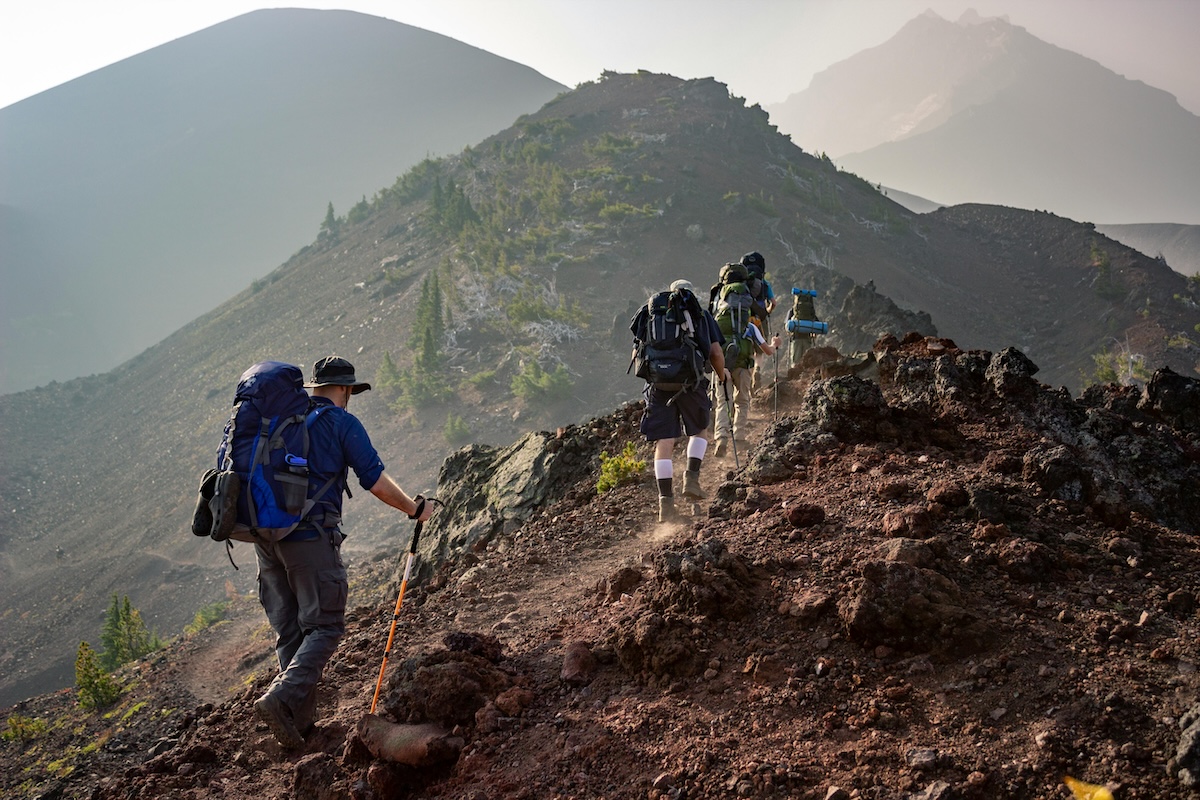
Safety Gear to Bring for Your First Hike
Skip to Section
Ask any adventurer, and a hike is sure to be on their bucket list. In fact, popular hiking trails draw millions of visitors each year—for example, the Appalachian Trail draws over three million visitors annually.
With their amazing views, fresh air, and beautiful wildlife, hiking trails are natural treasures that must be explored respectfully and safely. And while many trails known for being long and challenging have shorter routes for less experienced visitors or those pressed for time, the untamed wilderness still needs to be taken seriously.
While there’s a lot to enjoy on a hike, it’s easy to get injured if you’re not careful. According to World Metrics, 14% of search and rescue operations mounted in the US National Parks under a single year were attributed to hiking accidents. In 2020, the New York Times also noted that as hiking gains popularity, trail injuries subsequently rise. And an Outside survey of over 700 hikers on the John Muir Trail found that a lack of proper equipment was one of the leading causes of hiking injuries.
With this in mind, if you’re about to head out for your first hike, here are a few safety essentials you should bring along!
Protective Sunglasses
While you may think a trail’s canopies will shield your eyes from the sun, this isn’t true—especially at higher elevations, which leave you more prone to UV ray exposure regardless of foliage.
So, when prepping your standard sun protection, don’t forget your protective sunglasses! These block out 100% UV rays so that your vision can stay clear and comfortable. If you require vision correction, you can also go with prescription sunglasses. Virtually all types of sunglasses can be manufactured with prescriptions, and for hiking, you’ll want a pair that can withstand above-average wear and tear in addition to giving you clear vision. If you’re unsure where to look, consider the line of prescription shades from WileyX, specially designed for more rugged pursuits. The thick wraparound style keeps out all glare and wind, and the lightweight material prevents chafing. The lenses are also polarized for better visual acuity, and the lenses are treated as anti-fog and anti-scratch, so your field of view won’t be compromised. This will help prevent accidents caused by tired eyes or poor visibility in the terrain.
Trekking Poles
Younger hikers and those new to the trail may find the idea of using extra gear for balance, like trekking poles, to be unnecessary. Some may even (wrongly) assume that these are only for older adults or those with mobility issues.
A trail doesn’t discriminate and will be rocky and slippery regardless of who is on it—this is why the same Outside poll cited above revealed that trekking poles play a big role in determining whether or not you’re at risk of a trail injury. According to the experts consulted in that study, using these poles can reduce the chance of lower extremity injuries. Because they help distribute weight, they can also help alleviate strains. Of course, if you’re a casual hiker, you can make do with a more budget-friendly pair of poles. Check out the affordable REI Co-op Trailmade Poles, which have foam grips for comfort, telescoping legs for customizability, and an aluminum build for durability.
Headlamp
And finally, don’t underestimate how easily it can get dark on a trail! Because you’re usually far from any well-lit infrastructure, there’s often no artificial light to help light your path. Once the sun sets, the trees and other plants can block out all types of light, making it incredibly difficult to navigate if you don’t have proper gear. Consider the time of year that you’re hiking as well—daylight hours are shorter during the winter months, meaning you have a higher chance of an accident or getting lost. Naturally, making sure that you get back to camp or your car before sunset is the best route to take, but if you do get caught in the dark, you’ll be thankful to have a headlamp.
Since these are hands-free, you don’t need to worry about holding them up. Plus, since they’re essentially at eye level, they will illuminate any direction that you look. Look for something with high luminosity—for example, the SLONIK Headlamp, which remains bright even in nighttime surroundings. Aside from being rechargeable, this headlamp has a lifespan of 100,000 hours and is waterproof and lightweight.
Over to you! What hiking gear do you use on the trail? Share your insights and advice with the Frayed Passport community!
Featured image by Eric Sanman on Pexels.
Information published on this website and across our networks can change over time. Stories and recommendations reflect the subjective opinions of our writers. You should consult multiple sources to ensure you have the most current, safe, and correct details for your own research and plans.
Frayed Passport is a participant in the Amazon Associates Program, an affiliate advertising program designed to provide a means for sites to earn advertising fees by advertising and linking to Amazon.com. We also may share links to other affiliates and sponsors in articles across our website.




